Outline drawing art is one of the most accessible and rewarding forms of artistic expression that anyone can master. Whether you’re holding a pencil for the first time or looking to strengthen your artistic foundation, this fundamental technique opens doors to countless creative possibilities. From the flowing lines of Henri Matisse to the bold strokes of Pablo Picasso, outline drawing art has captivated artists and audiences for centuries, proving that sometimes the simplest approach creates the most powerful impact.
Key Points Summary
- Outline drawing art focuses on capturing subjects using clean, deliberate lines without shading or internal details
- Three main techniques include blind contour, modified contour, and continuous line drawing
- Both traditional tools (pencils, pens) and digital platforms offer excellent options for beginners
- Regular practice with simple subjects builds confidence and skill
- Master artists throughout history have used line art to create iconic works
- Our FREE Outline Drawing Tool – check it out now
What is Outline Drawing Art?
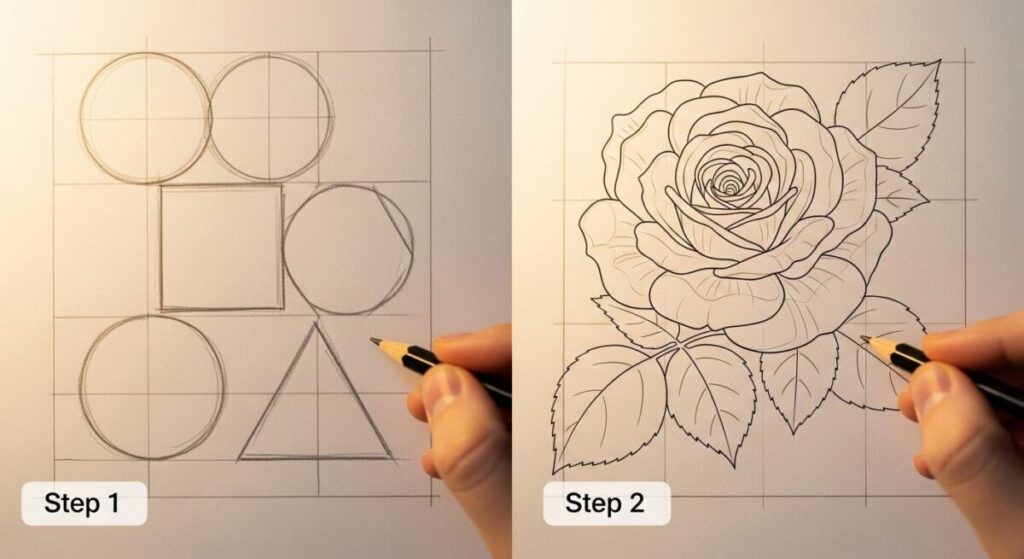
“Outline drawing art is a fundamental drawing technique that focuses on capturing the essential contours and edges of a subject using clean, deliberate lines without internal details or shading.”
Outline drawing art strips away complexity to reveal the pure essence of form through line alone. This technique challenges you to see subjects in their most basic elements – the edges, curves, and contours that define their shape. Unlike detailed drawings with shading and texture, outline drawings rely entirely on the power of a single line to communicate form, movement, and character.
The beauty of this approach lies in its simplicity and accessibility. You don’t need expensive materials or years of training to create compelling outline drawing art. A simple pencil and paper can produce stunning results that capture the viewer’s attention and imagination.
Essential Outline Drawing Techniques
Contour Drawing Methods
Contour drawing forms the backbone of all outline drawing art. This observational technique involves carefully studying your subject and translating its edges into continuous lines. There are three primary approaches, each offering unique benefits:
| Technique | Description | Best For |
|---|---|---|
| Blind Contour | Draw without looking at paper | Developing observation skills |
| Modified Contour | Occasional glances at paper allowed | Building accuracy and confidence |
| Continuous Line | Never lift pencil from paper | Creating fluid, connected drawings |
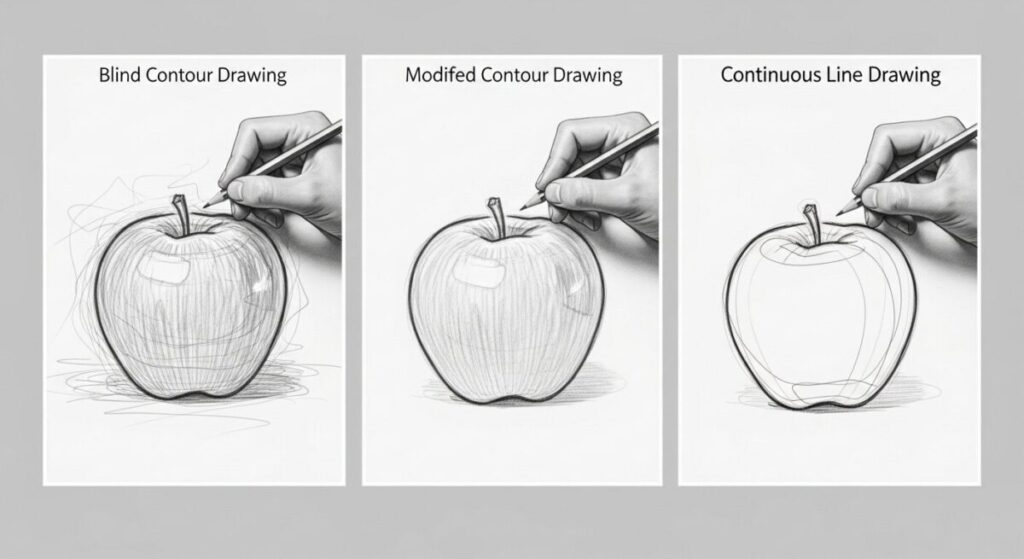
Blind contour drawing might seem intimidating at first, but it’s incredibly effective for training your eye-hand coordination. Your drawings might look wonky, but that’s perfectly normal! This technique forces you to really see your subject rather than drawing what you think you know.
Learn more about foundational drawing skills
Modified contour drawing offers a more balanced approach. You can peek at your paper occasionally to check proportions while maintaining focus on careful observation. This method is perfect for beginners who want to build confidence while developing accuracy.
Continuous line drawing creates fascinating, flowing artwork where everything connects. This technique teaches you to see relationships between different parts of your subject and often produces surprisingly expressive results
Line Quality and Variation
The secret to compelling outline drawing art lies in understanding line quality. Not all lines are created equal! Varying your line weight, pressure, and character transforms ordinary sketches into dynamic artwork.
Thick lines can suggest:
- Areas closest to the viewer
- Strong shadows or edges
- Important focal points
- Bold, confident statements
Thin lines work well for:
- Background elements
- Delicate details
- Subtle transitions
- Areas farther away
Experiment with different pressures and drawing speeds. Quick, confident strokes often produce more energetic, appealing lines than slow, hesitant marks. Remember, there’s no “perfect” line – each mark contributes to the overall character of your drawing.
Tools and Materials for Outline Drawing
Traditional Drawing Tools
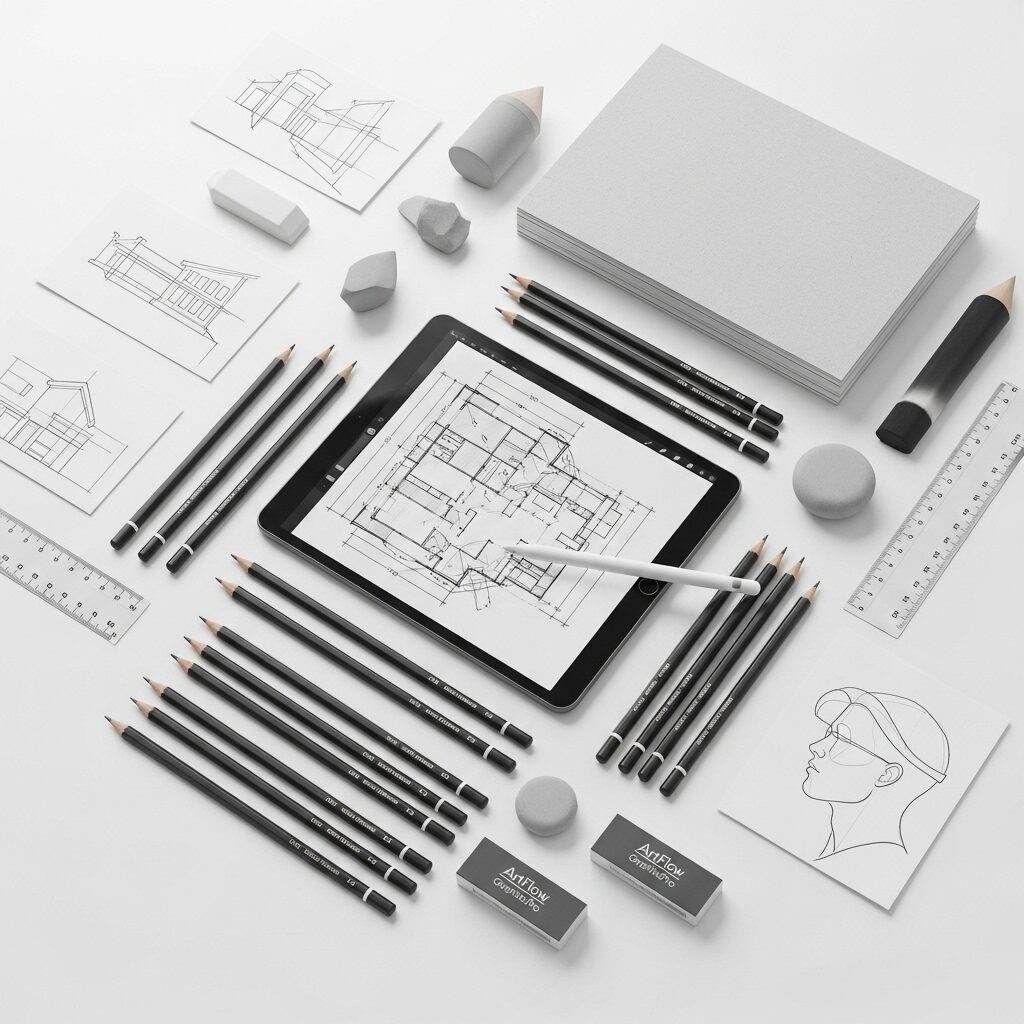
You don’t need fancy supplies to create beautiful outline drawing art. Here are the essentials:
Pencils:
- 2H: Light, precise lines for initial sketches
- HB: Balanced hardness for general drawing
- 2B: Darker, softer lines for bold strokes
Paper:
- Smooth paper for detailed work
- Textured paper for expressive, gestural drawings
- Quality drawing paper recommendations
Other essentials:
- Kneaded eraser for gentle corrections
- Blending stump for softening harsh lines
- Ruler for measuring proportions
Digital Drawing Solutions
Digital platforms revolutionize outline drawing art by offering incredible flexibility and experimentation opportunities. Modern drawing tablets respond naturally to pressure, translating traditional techniques into the digital realm.
Popular options include:
- iPad with Apple Pencil: Excellent for beginners with apps like Procreate
- Wacom tablets: Professional-grade tools for serious artists
- Free digital drawing alternatives: Budget-friendly options
Digital tools offer advantages like infinite undo, customizable brushes, and easy sharing capabilities. However, many artists recommend starting with traditional materials to develop fundamental skills before transitioning to digital platforms.
Step-by-Step Outline Drawing Tutorial
Ready to create your first outline drawing art? Follow this beginner-friendly process:
Getting Started: Your First Drawing
- Choose a simple subject like an apple, coffee mug, or basic geometric shape
- Set up proper lighting – avoid harsh shadows that confuse contours
- Position yourself comfortably with your subject at eye level
- Start with light exploration lines to establish basic proportions
- Focus on major edges first – capture the overall shape before details
- Gradually refine your lines, making them more confident and decisive
- Avoid internal details – resist the urge to add shading or texture
- Step back frequently to assess proportions and overall accuracy
Introducing OutlineMagic: Your Personal AI Art Assistant
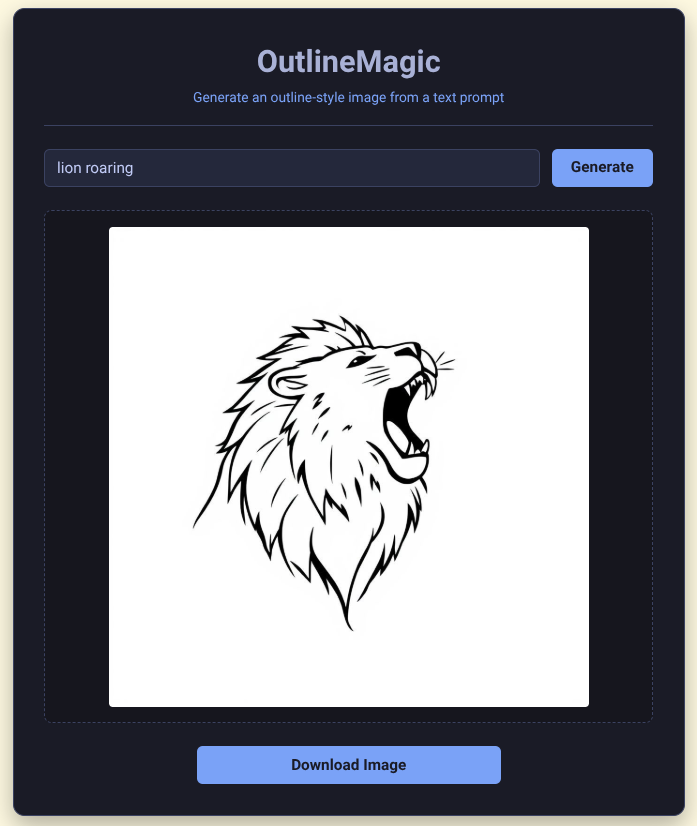
While mastering the physical craft of drawing is a rewarding journey, sometimes you need to bring an idea to life quickly and efficiently. In the digital age, technology offers incredible tools to supplement our creative process. That’s where OutlineMagic comes in.
We’ve embedded a simple yet powerful web tool right here in this post. It uses artificial intelligence to convert any text prompt you can imagine into a clean, beautiful outline image. Want to see “a majestic lion roaring” as a simple sketch? Or perhaps “a futuristic cityscape at dawn” in a minimalist line style? Just type it in and watch the magic happen.
This tool is perfect for:
- Generating inspiration: Quickly visualize concepts before you start drawing.
- Creating custom graphics: Need a simple icon for your website or a design for a t-shirt? Generate it in seconds.
- Educational purposes: It’s a fun way for kids and beginners to see how complex ideas can be broken down into simple lines.
Try OutlineMagic Now!
OutlineMagic
Generate an outline-style image from a text prompt
Download Free Outline Coloring Book
Practice Subjects for Skill Building
Start simple and gradually increase complexity:
Beginner level:
- Fruits (apples, bananas, oranges)
- Basic household objects (mugs, bottles, books)
- Simple geometric shapes and forms
Intermediate level:
- Flowers and plants
- Basic facial features
- Architecture and buildings
Advanced level:
- Full portraits
- Complex still life arrangements
- Landscape scenes with perspective drawing techniques
Advanced Techniques and Creative Applications
Modern Applications of Outline Drawing Art
Outline drawing art isn’t just for art students – it’s everywhere in our modern world:
- Logo design: Clean, memorable brand identities
- Illustration: Books, magazines, and digital media
- Tattoo art: Bold, timeless designs
- Architecture: Initial concept sketches and blueprints
- Fashion design: Garment sketches and technical drawings
Integration with Other Art Forms
Outline drawing art serves as a foundation for virtually every other artistic medium. Understanding line work enhances your abilities in:
- Painting: Better composition and form understanding
- Sculpture: Spatial awareness and proportional relationships
- Digital art: Bridging traditional and digital techniques
- Caricature drawing: Exaggerated but accurate proportions
Common Mistakes and How to Avoid Them
Learning outline drawing art involves overcoming typical beginner challenges:
Mistake #1: Drawing too slowly and hesitantly
- Solution: Practice quick, confident strokes. Trust your instincts.
Mistake #2: Focusing on details too early
- Solution: Establish overall proportions before adding specific features.
Mistake #3: Not observing the subject carefully enough
- Solution: Spend more time looking at your subject than at your paper.
Mistake #4: Using inconsistent line weights
- Solution: Maintain consistent pressure unless intentionally varying for effect.
Mistake #5: Getting frustrated with imperfect results
- Solution: Remember that every line teaches you something new. Embrace the learning process.
Inspiration from Master Artists
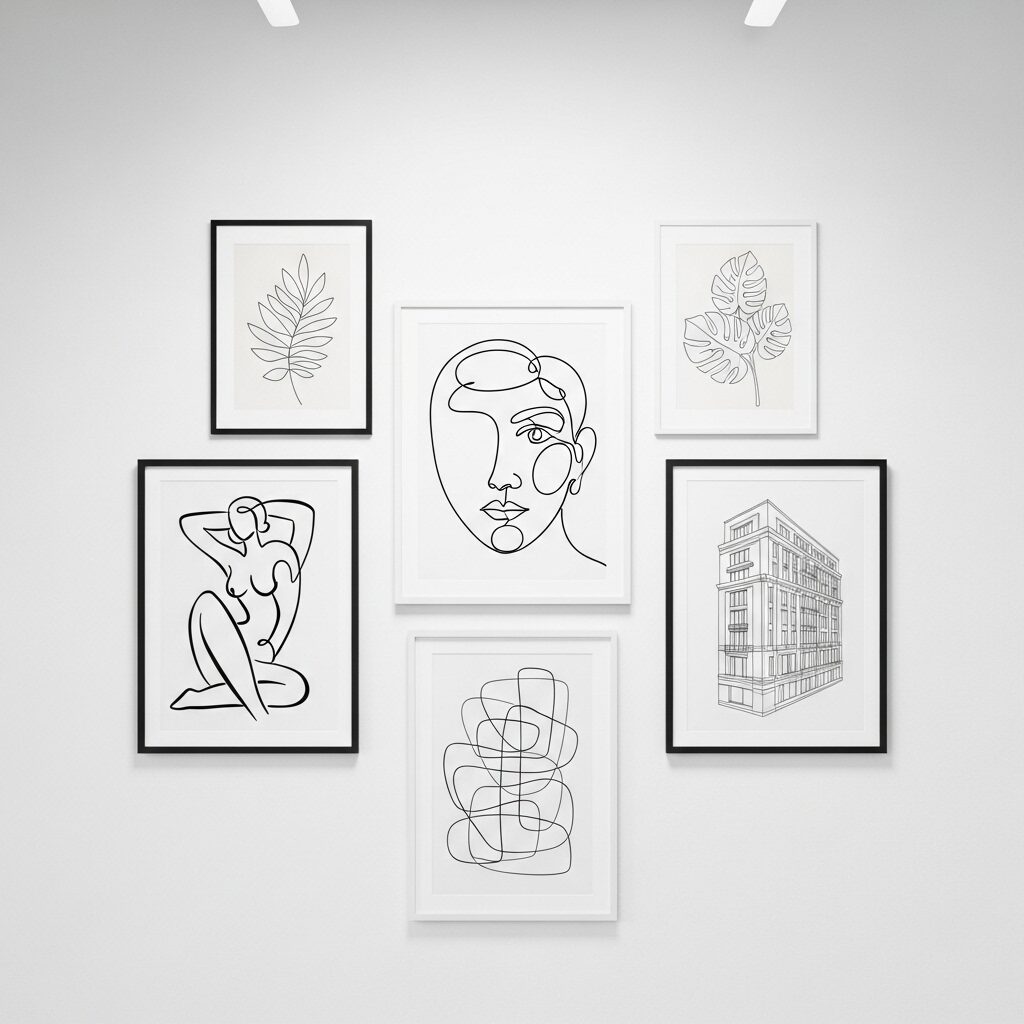
Throughout art history, masters have used outline drawing art to create iconic works:
Pablo Picasso revolutionized line art with his continuous line drawings, proving that a single unbroken line could capture incredible emotion and movement. His work demonstrates how outline drawing art can be both simple and profound.
Henri Matisse created some of the most recognizable line drawings in art history. His “Blue Nudes” series shows how understanding artistic styles can influence your own outline drawing art.
David Hockney’s pool paintings began as simple line drawings, showing how outline drawing art can serve as the foundation for larger, more complex works.
Contemporary artists continue pushing the boundaries of what’s possible with line alone. Studying famous artists and their techniques provides endless inspiration for your own outline drawing art journey.
Frequently Asked Questions
Q: What is Outline in art? A: In art, an outline is a line that defines the outer edge of a figure, object, or shape. It’s also often referred to as a contour..
Q: What is the difference between outline and contour drawing? A: Outline drawing focuses on the external edges of objects, while contour drawing includes both external edges and internal contours that define form and volume.
Q: What pencil is best for outline drawing? A: HB pencils offer the best balance for beginners, providing clean lines without being too light or too dark. As you advance, experiment with different grades for varied effects.
Q: Can you do outline drawing digitally? A: Absolutely! Digital drawing tablets and software offer excellent tools for outline drawing art, with advantages like pressure sensitivity and infinite undo options.
Q: How do you make outline drawings more creative? A: Experiment with varying line weights, try different drawing tools, combine multiple subjects, or incorporate elements from different art styles and movements.
Q: What are some easy outline drawing ideas? A: Start with simple subjects like fruits, basic household objects, flowers, or cute, easy drawings that build confidence while developing skills.
Q: How do you improve your outline drawing skills? A: Practice regularly, study from life rather than photos when possible, experiment with different techniques, and don’t be afraid to make mistakes – they’re part of the learning process.
Outline drawing art represents the perfect starting point for any artistic journey. Its accessibility, combined with infinite creative possibilities, makes it an essential skill for artists of all levels. Whether you’re sketching in a coffee shop, creating digital illustrations, or developing ideas for larger artworks, the principles of outline drawing art will serve you throughout your creative life. Remember, every master artist started with simple lines – your artistic adventure begins with that first confident stroke across the paper.


